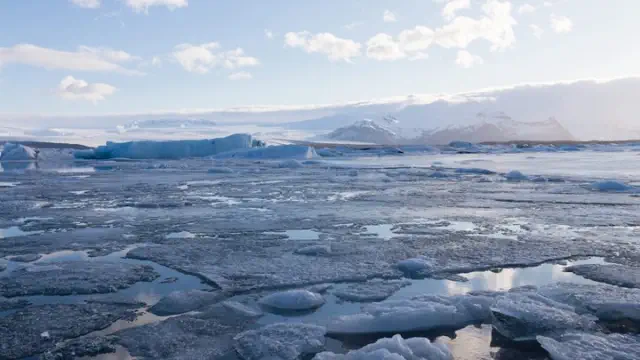
View pictures in App save up to 80% data.
In 1831, a massive volcanic eruption cooled the Earth’s atmosphere by 1 degree Celsius and even caused the Sun to appear in varying shades of purple, green, and even blue due to excess sulfur dioxide in the atmosphere.
Scientists have tried for years to find the volcanic culprit, and a new study comparing polar ice shards with samples from the Zavaritskii volcano in the Kuril islands has found an exact match.
This event is far from a historical outlier, so understanding these events could help coordinate a global response when the next catastrophic eruption hits.
“Desolate weather, it has rained again all night and all morning, it is as cold as in winter, there is already deep snow on the nearest hills.” These were the words of German composer Felix Mendelssohn as he traveled through the Alps in 1831. However, there was only one problem: it was summer.
In the spring-summer of 1831, a volcano somewhere on Earth erupted, sending massive plumes of sulfur dioxide into the atmosphere, causing a global cooling, and forcing our planet to play host to some weird climatic conditions that year.
A global cooling of one degree Celsius led to crop failures and famines around the world, but perhaps the strangest events were a variety of reports of a green, purple, and even blue-looking Sun in August. At the time, scientists have known that a volcano was the likely culprit but didn’t know which one should shoulder the blame. Now, a new study from scientists at the University of St. Andrews in the U.K. says they’ve solved the mystery: Zavaritskii volcano in the Kuril islands northwest of Japan is to blame.
The study’s lead author, University of St. Andrew’s Dr. William Hutchison, says that a break in this (unseasonably) cold case came thanks to advancements in technology that made the analysis of more volcanic evidence possible. The results of the study were published in the journal Proceedings of the National Academy of Sciences (PNAS).
“Only in recent years have we developed the ability to extract microscopic ash shards from polar ice cores and conduct detailed chemical analyses on them,” Hutchison explained in a press statement. “These shards are incredibly minute, roughly one-tenth the diameter of a human hair.”
Following the analysis of samples gathered years ago from a secluded volcano on the uninhabited Simushir island by researchers in Russia and Japan, Hutchison and his team discovered that the polar ash fragments matched perfectly with Zavaritskii.
“The moment in the lab when we analysed the two ashes together, one from the volcano and one from the ice core, was a genuine eureka moment,” Hutchison said in a press statement. “I couldn’t believe the numbers were identical. After this, I spent a lot of time delving into the age and size of the eruption in Kuril records to truly convince myself that the match was real.”
The climate-altering eruption of the Zavaritskii volcano is far from a historical outlier. The famous eruption of Mount Tambora in 1815 caused the subsequent Year Without Summer in the U.S. in 1816 with lakes and rivers being frozen as far as northwestern Pennsylvania in July. In a more contemporary example, the eruption of Indonesia’s Mount Pinatubo in 1991 cooled the atmosphere one degree Celsius after pumping 15 million tons of sulfur dioxide into the atmosphere.
Although this persistent volcanic enigma has been unraveled, Hutchison cautions that gaining a deeper understanding of these explosive occurrences is crucial for readying the globe for the next inevitable large-scale eruption.
Hutchison stated in a press release, “The existence of numerous volcanoes similar to this one underscores the challenges we face in forecasting the timing and location of the next significant eruption. As researchers and as a global community, it’s essential for us to strategize an international approach in preparation for the next major eruption, akin to the event of 1831.”









